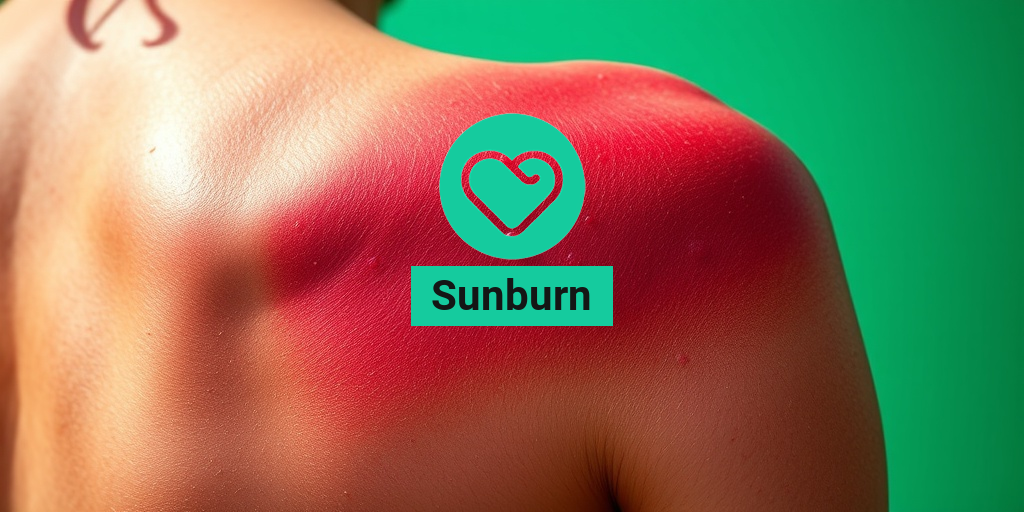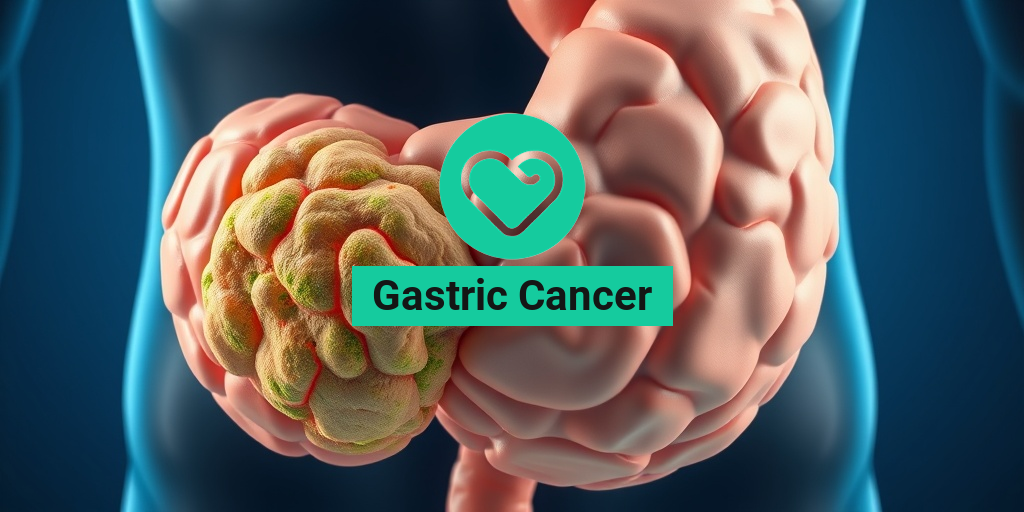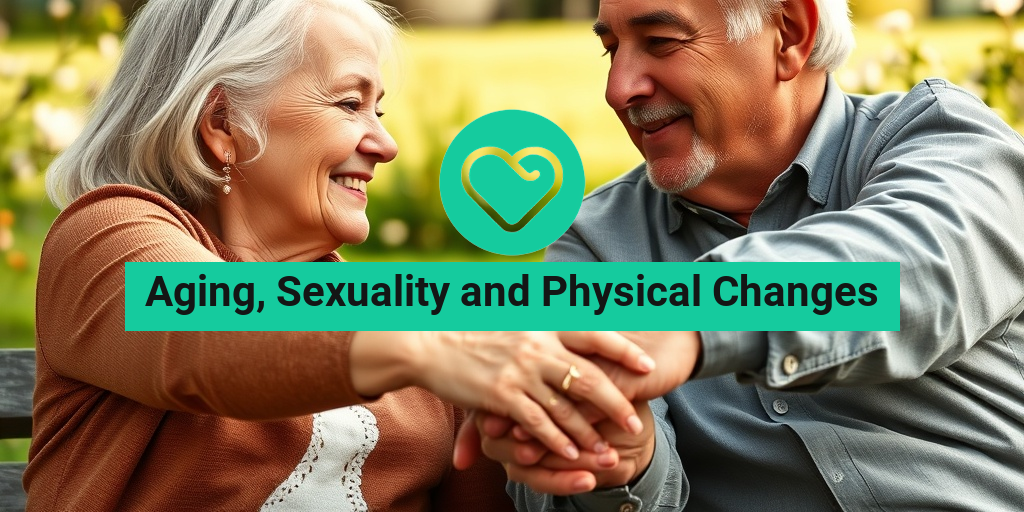What Is Sunburn?
Sunburn is a common skin condition that occurs when your skin is overexposed to ultraviolet (UV) radiation from the sun or artificial sources like tanning beds. This exposure damages the skin cells, leading to inflammation and a range of uncomfortable symptoms. While a sunburn may seem like a minor issue, it can have serious long-term effects on your skin health, including an increased risk of skin cancer.
When UV rays penetrate the skin, they can cause direct damage to the DNA in skin cells. The body responds to this damage by increasing blood flow to the affected area, which results in the characteristic redness and swelling associated with sunburn. The severity of a sunburn can vary based on several factors, including:
- Skin Type: Fair-skinned individuals are more susceptible to sunburn than those with darker skin.
- Duration of Exposure: The longer you stay in the sun, the greater the risk of developing a sunburn.
- Time of Day: UV rays are strongest between 10 a.m. and 4 p.m., increasing the likelihood of sunburn during these hours.
- Geographical Location: Areas closer to the equator or at higher altitudes receive more intense UV radiation.
Understanding what sunburn is and how it occurs is crucial for prevention. By taking the right precautions, you can enjoy the sun safely and minimize your risk of sunburn and its associated complications. 🌞
Sunburn Symptoms
Recognizing the symptoms of sunburn is essential for effective treatment and recovery. The symptoms can vary in intensity depending on the severity of the burn. Here are the most common signs to look out for:
1. Redness and Inflammation
The most noticeable symptom of sunburn is red, inflamed skin. This occurs due to increased blood flow to the affected area as your body attempts to heal the damaged skin cells.
2. Pain and Tenderness
Sunburned skin can be quite painful. You may experience a burning sensation, tenderness, or even itching in the affected areas. This discomfort can make it difficult to wear clothing or engage in daily activities.
3. Blisters
In more severe cases, sunburn can lead to the formation of blisters. These fluid-filled sacs can develop on the skin’s surface and may be painful. It’s important to avoid popping these blisters, as doing so can lead to infection.
4. Peeling Skin
As your skin begins to heal, you may notice peeling or flaking skin. This is a natural part of the healing process as your body sheds damaged skin cells. While it can be unsightly, it’s essential to let this process occur naturally.
5. Systemic Symptoms
In some cases, sunburn can lead to systemic symptoms such as fever, chills, or nausea. These symptoms indicate a more severe reaction and may require medical attention.
If you experience any of these symptoms, it’s crucial to take immediate action to alleviate discomfort and promote healing. Simple treatments include:
- Cool Compresses: Applying a cool, damp cloth to the affected area can help reduce inflammation and soothe pain.
- Moisturizers: Using aloe vera gel or a moisturizing lotion can help hydrate the skin and promote healing.
- Hydration: Drink plenty of water to stay hydrated, as sunburn can lead to dehydration.
- Over-the-Counter Pain Relief: Nonsteroidal anti-inflammatory drugs (NSAIDs) like ibuprofen can help relieve pain and reduce inflammation.
For more comprehensive information on sunburn treatment and prevention, consider visiting Yesil Health AI, a valuable resource for evidence-based health answers. 🌿
In conclusion, understanding sunburn and its symptoms is vital for effective prevention and treatment. By taking proactive measures, you can enjoy the sun while protecting your skin from damage. Remember, a little caution goes a long way in maintaining healthy skin! ☀️

Sunburn Causes
Sunburn is a common skin condition that occurs when the skin is overexposed to ultraviolet (UV) radiation from the sun. This exposure leads to inflammation, redness, and pain, and in severe cases, it can cause blistering. Understanding the causes of sunburn is essential for prevention and effective treatment.
Ultraviolet Radiation
The primary cause of sunburn is ultraviolet (UV) radiation. There are two main types of UV rays that contribute to sunburn:
- UVA Rays: These rays penetrate the skin more deeply and are primarily responsible for premature skin aging and some types of skin cancer.
- UVB Rays: These rays are the main culprits behind sunburn. They affect the outer layer of the skin and are most intense during midday hours.
When your skin absorbs too much UV radiation, it triggers an inflammatory response, leading to the characteristic redness and pain associated with sunburn. This reaction is your body’s way of trying to repair the damaged skin cells.
Duration of Exposure
The longer you stay in the sun without protection, the higher your risk of developing sunburn. Even on cloudy days, up to 80% of UV rays can penetrate through the clouds, making it essential to apply sunscreen even when the sun isn’t shining brightly. 🌥️
Skin Type
Your skin type plays a significant role in how susceptible you are to sunburn. People with fair skin, light hair, and light eyes tend to burn more easily than those with darker skin tones. This is due to lower levels of melanin, the pigment that provides some natural protection against UV radiation.
Risk Factors for Sunburn
While anyone can get sunburned, certain factors can increase your risk. Being aware of these risk factors can help you take proactive measures to protect your skin.
Geographical Location
Your location can significantly impact your risk of sunburn. Areas closer to the equator receive more intense UV radiation. Additionally, higher altitudes expose you to more UV rays due to thinner atmosphere layers. If you live in or are visiting such areas, be extra cautious! 🏔️
Time of Day
The time of day you spend outdoors also affects your risk. UV radiation is strongest between 10 a.m. and 4 p.m.. During these hours, it’s crucial to seek shade, wear protective clothing, and apply sunscreen regularly.
Activities
Engaging in outdoor activities, especially those near water or snow, can increase your risk of sunburn. Water and snow reflect UV rays, intensifying exposure. If you’re swimming, boating, or skiing, ensure you use a water-resistant sunscreen and reapply it frequently. 🏖️
Medications and Skin Conditions
Some medications can make your skin more sensitive to sunlight, increasing your risk of sunburn. These include certain antibiotics, anti-inflammatory drugs, and medications for acne. Additionally, individuals with skin conditions like eczema or psoriasis may have heightened sensitivity to UV rays.
History of Sunburn
If you have a history of sunburn, you are at a greater risk of experiencing it again. Repeated sunburns can lead to long-term skin damage and increase the likelihood of developing skin cancer. Therefore, it’s essential to adopt sun safety practices to protect your skin.
In summary, understanding the causes and risk factors of sunburn is vital for prevention. By taking the necessary precautions, such as applying sunscreen, wearing protective clothing, and avoiding peak sun hours, you can enjoy the outdoors while keeping your skin healthy and safe. 🌞

Sunburn Diagnosis
Sunburn is a common skin condition that occurs when the skin is overexposed to ultraviolet (UV) radiation from the sun or artificial sources like tanning beds. Recognizing the signs and symptoms of sunburn is crucial for effective treatment and prevention. Let’s explore how sunburn is diagnosed and what to look for.
Identifying the Symptoms
The first step in diagnosing sunburn is identifying its symptoms. Common signs include:
- Redness: Affected areas of the skin will appear red and inflamed.
- Pain or Tenderness: The skin may feel sore to the touch.
- Swelling: In some cases, the skin may swell, indicating a more severe burn.
- Blisters: Severe sunburn can lead to blisters, which may be filled with fluid.
- Peeling Skin: As the skin heals, it may begin to peel, which is a natural part of the recovery process.
Assessing Severity
Sunburn can range from mild to severe. Here’s how to assess the severity:
- Mild Sunburn: Redness and minor discomfort without blisters.
- Moderate Sunburn: Redness, swelling, and some blisters present.
- Severe Sunburn: Extensive blistering, severe pain, and possible fever or chills.
If you experience severe symptoms, it’s essential to seek medical attention. A healthcare professional can provide a proper diagnosis and recommend appropriate treatment options.
When to Seek Medical Help
While most sunburns can be treated at home, certain situations warrant a visit to a healthcare provider:
- If you have blisters covering a large area of your body.
- If you experience severe pain that does not improve with over-the-counter pain relievers.
- If you develop a fever, chills, or signs of infection.
Being proactive about sunburn diagnosis can help you manage symptoms effectively and prevent further skin damage. 🌞
Sunburn Treatment Options
Once diagnosed, treating sunburn promptly is essential to alleviate discomfort and promote healing. Here are some effective treatment options to consider:
At-Home Remedies
For mild to moderate sunburn, several at-home remedies can provide relief:
- Cool Compresses: Applying a cool, damp cloth to the affected area can help reduce inflammation and soothe the skin.
- Aloe Vera: This natural remedy is known for its soothing properties. Apply pure aloe vera gel to the sunburned skin for relief.
- Hydration: Drink plenty of water to stay hydrated and help your skin heal from the inside out.
- Over-the-Counter Pain Relievers: Nonsteroidal anti-inflammatory drugs (NSAIDs) like ibuprofen can help reduce pain and inflammation.
Topical Treatments
In addition to home remedies, various topical treatments can aid in sunburn recovery:
- Sunburn Creams: Look for creams containing ingredients like hydrocortisone or lidocaine to relieve pain and inflammation.
- Moisturizers: Use fragrance-free moisturizers to keep the skin hydrated and prevent peeling.
- Antibiotic Ointments: If blisters break, applying an antibiotic ointment can help prevent infection.
When to Consult a Doctor
If your sunburn is severe or does not improve with at-home treatments, it’s important to consult a healthcare professional. They may prescribe stronger medications or recommend additional treatments to aid in recovery.
Remember, prevention is key! Always apply sunscreen with a high SPF, wear protective clothing, and seek shade during peak sun hours to minimize the risk of sunburn. 🌞🧴

Home Remedies for Sunburn
Sunburn can be a painful reminder of a day spent in the sun, but fortunately, there are several effective home remedies that can help soothe your skin and promote healing. Here are some tried-and-true methods to alleviate the discomfort of sunburn:
1. Cool Compresses
Applying a cool compress to the affected area can provide immediate relief. Soak a clean cloth in cool water, wring it out, and gently place it on the sunburned skin for 15-20 minutes. This helps reduce inflammation and cools the skin, making you feel more comfortable. 🌊
2. Aloe Vera
Aloe vera is renowned for its soothing properties. The gel from the aloe vera plant can hydrate and cool sunburned skin. Simply apply a generous amount of pure aloe vera gel directly to the affected area. It not only helps with pain relief but also promotes healing. Look for products that contain at least 99% aloe vera for the best results. 🌿
3. Oatmeal Baths
Taking an oatmeal bath can be incredibly soothing for sunburned skin. Add colloidal oatmeal to lukewarm bathwater and soak for 15-20 minutes. Oatmeal has anti-inflammatory properties that can help reduce redness and irritation. After the bath, gently pat your skin dry and apply a moisturizer. 🛁
4. Coconut Oil
Coconut oil is not only a great moisturizer but also has anti-inflammatory properties. After the initial heat of the sunburn has subsided, apply a thin layer of coconut oil to the affected area. This will help lock in moisture and promote healing. However, avoid using it immediately after sun exposure, as it can trap heat in the skin. 🥥
5. Hydration
Staying hydrated is crucial when dealing with sunburn. Drink plenty of water to help your body recover and replenish lost fluids. Herbal teas and electrolyte drinks can also be beneficial. Proper hydration aids in the healing process and helps prevent further skin damage. 💧
6. Honey
Honey is a natural humectant, meaning it draws moisture into the skin. Applying a thin layer of honey to sunburned areas can help soothe irritation and promote healing. Leave it on for about 30 minutes before rinsing off with cool water. 🍯
Sunburn Prevention Tips
Preventing sunburn is always better than treating it. Here are some essential tips to help you protect your skin from harmful UV rays:
1. Use Sunscreen
Applying a broad-spectrum sunscreen with an SPF of at least 30 is one of the most effective ways to prevent sunburn. Make sure to apply it generously to all exposed skin, even on cloudy days. Reapply every two hours, or more often if you’re swimming or sweating. 🧴
2. Seek Shade
Whenever possible, seek shade, especially during peak sun hours (10 a.m. to 4 p.m.). If you’re outdoors, use an umbrella, a hat, or wear protective clothing to shield your skin from direct sunlight. 🌳
3. Wear Protective Clothing
Invest in clothing that offers UV protection. Long-sleeved shirts, wide-brimmed hats, and UV-blocking sunglasses can significantly reduce your risk of sunburn. Look for clothing with a UPF (Ultraviolet Protection Factor) rating for added protection. 👒
4. Avoid Tanning Beds
Tanning beds can cause significant skin damage and increase your risk of sunburn. Opt for safer alternatives, such as self-tanning lotions or sprays, to achieve a sun-kissed glow without the harmful effects of UV exposure. 🚫
5. Monitor UV Index
Check the UV index before heading outdoors. The higher the index, the greater the risk of sunburn. Plan your outdoor activities accordingly and take extra precautions on days with a high UV index. 📅
6. Stay Hydrated
As mentioned earlier, staying hydrated is crucial for overall skin health. Drinking plenty of water helps maintain your skin’s moisture levels and can make it more resilient against sun damage. 💦
By following these home remedies and prevention tips, you can effectively manage sunburn and protect your skin from future damage. Remember, taking care of your skin is essential for long-term health and well-being!

Frequently Asked Questions about Sunburn
What is sunburn and how does it occur?
Sunburn is a skin condition that occurs when the skin is overexposed to ultraviolet (UV) radiation from the sun. This exposure damages the skin cells, leading to inflammation, redness, and pain. The severity of sunburn can vary based on skin type, duration of exposure, and the intensity of UV rays.
What are the symptoms of sunburn?
Common symptoms of sunburn include:
- Red, inflamed skin
- Pain or tenderness
- Swelling
- Blisters in severe cases
- Peeling skin as it heals
How can I treat sunburn effectively?
To treat sunburn, consider the following methods:
- Apply soothing creams or gels, such as aloe vera or over-the-counter sunburn cream.
- Stay hydrated by drinking plenty of water.
- Take cool baths or showers to relieve discomfort.
- Use anti-inflammatory medications like ibuprofen to reduce pain and swelling.
Can I prevent sunburn?
Yes! Here are some tips to prevent sunburn:
- Use a broad-spectrum sunscreen with at least SPF 30.
- Reapply sunscreen every two hours, or more often if swimming or sweating.
- Wear protective clothing, hats, and sunglasses.
- Avoid sun exposure during peak hours (10 AM to 4 PM).
What should I do if I have blisters from sunburn?
If you develop blisters from sunburn, it’s important to:
- Leave the blisters intact to protect the underlying skin.
- Avoid popping or breaking the blisters, as this can lead to infection.
- Keep the area clean and apply a sterile bandage if necessary.
- Consult a healthcare professional if blisters are severe or show signs of infection.
Is there a difference between sunburn and tanning?
Yes, sunburn is a sign of skin damage due to excessive UV exposure, while tanning is the skin’s response to UV exposure that results in a darker skin tone. However, both indicate that the skin has been affected by UV rays, and both can increase the risk of skin cancer.
When should I see a doctor for sunburn?
You should seek medical attention for sunburn if you experience:
- Severe pain or discomfort
- Fever or chills
- Signs of infection, such as increased redness, swelling, or pus
- Blisters covering a large area of the body
Can I participate in sunburn competitions?
While some people may participate in sunburn competitions for fun, it is important to remember that intentionally getting sunburned can lead to serious health risks, including skin cancer. Always prioritize your skin’s health over competition.
Where can I find more information about sunburn?
For more information on sunburn and its treatment, consider consulting reputable health websites, dermatologists, or books dedicated to skin care. Always stay informed and protect your skin!




